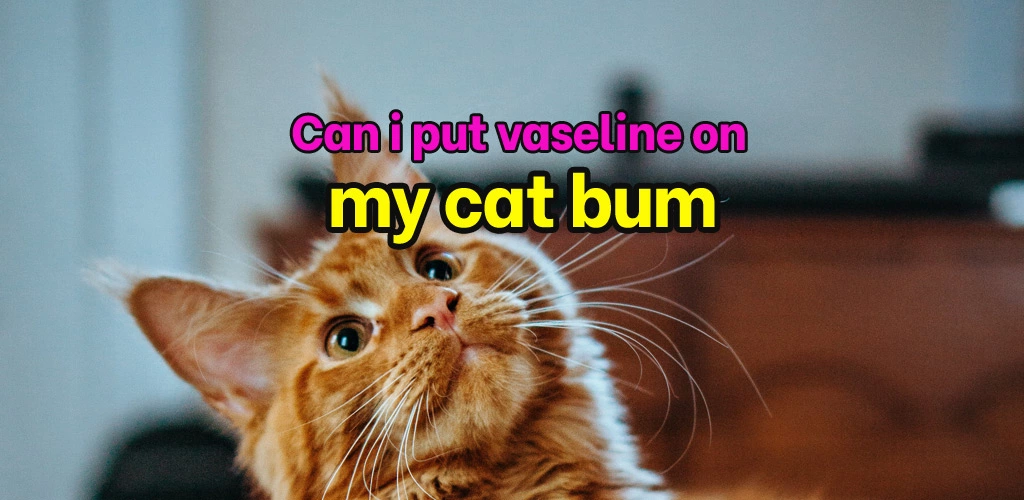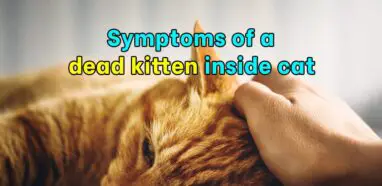It’s helpful to have a Vaseline bath in the cabinet for many reasons. I’m sure many individuals reading about this have somewhere in their house one of those tiny blue tubes.
After considerable study, few discussions here and there with other parents, this post could only offer a concept of how Vaseline works for your cats. For you, this post explains how I can apply Vaseline to my cat’s bum.

Vaseline or petroleum jelly is well recognized to keep the skin humidified. It prevents dry skin and cures it. They are ideal for lip balm, moisturizer for hard and cracked heels, skin or foot, and other skin conditions.
Table of Contents
Is vaseline safe for cats bum
For both people and animals, Vaseline is safe. The petroleum in it is purified in three ways. This is done so that it may be safe for human consumption. Vaseline is extremely unlikely to cause obstruction, discomfort, distress, etc. Vaseline is not just good for individuals with delicate skin. This also implies that animal skin and cats bum may be used safely.
What will happens if my cat lick vaseline
In any event, your cat licks Vaseline; there will be no negative consequences to you. That’s accurate, except sitting on it and eating a big part. Vaseline is produced relatively unaltered in its digestive system when you lick or consume it. Many veterinarians suggest Vaseline for hairballs because they effectively slide away from the obstruction through the moggy system.
How to tell if your cat is constipated
Healthy cats generally do not suffer from constipation. The situation is more prevalent in older cats, fat animals (who cannot cure their rear end), and cats with underlying medical conditions. The main signs of cat constipation are:
- Hard and dry stools
- Cannot make stools at all
- Straining or weeping in the box
- Avoid the litter box altogether.
- Strong stance
- Strong abdomen
Thus a fundamental health condition frequently causes constipation signs of other digestive problems may be seen. Examples include nausea, vomiting, a lower appetite, weight loss, increased or lower water consumption, increased urination, loss of muscles, stiff walking, and trouble leaping.
Call the doctor when you observe any of these symptoms. A veterinarian should assess cats who did not produce a stool in 48 to 72 hours, and the longer you wait to identify the issue, the harder it may be to cure. There are many potential explanations if you ask, “Why is my cat constipated?” Common causes of cats constipation
Can you give a cat vaseline for constipation
Can you give constipation to your cat Vaseline? You may give your cat 1⁄2 Vaseline teaspoon a day to ease constipation. However, we strongly suggest consulting your veterinarian first and only using the purest possible type of Vaseline.
Milk has been shown to assist cats in alleviating constipation. However, you should use modest quantities initially to avoid any harmful effects for your cat if they are sensitive to lactose.
No, it is not helpful to massage a constipated cat in releasing cats. More significantly, rubbing a constipated cat may induce them to clog up since the blockage causes them to suffer.
How much vaseline do you give a cat for constipation
Give 1/2 teaspoon of vaseline or petroleum jelly twice a day. Give one to three milliliter teaspoon twice a day of lactulose. Whisky ball control treatments “Temptations” Dose Several times twice a day.
Were you also aware that if you offer your furry buddy Vaseline, you may and swiftly play cat hairball? If the cat consumes it, it may assist in exiling hairballs occasionally in around 48 hours.
The jelly picks up the cat’s hair and then leaves the cat’s body. You may also use Vaseline on a cat’s wound so long as it is cleaned correctly. It may help heal wounds more quickly and keep the skin hydrated and protected.
How to treat cat constipation with vaseline
Vaseline won’t assist a stubborn cat. It is helpful just for a cat who vomits hairballs from time to time, nothing else. If the cat is constipated, it must go to the veterinarian. Often, the cat needs IV fluids or under the skin and may need enemas under anesthesia and manipulation, depending on how severe constipation is.
As you know, Vaseline is great for maintaining wet and slippery objects. This implies that if your kitty’s floor is coated with Vaseline, it will not be difficult for you to get rid of hard or dry stools.
A different technique that cats may utilize for constipation is to combine Vaseline with cat chow. A fantastic suggestion is to combine a little vaseline with the most OK cat food you have for your delicate stomach. In this manner, you will offer her excellent food while including a cure that may assist her in her needs.
Alternative ways to treat cat constipation at home
Constipation in cats is frequent. It’s usually minor, and you may assist your cat with easy remedies at home. But constipation in cats may sometimes indicate more significant health problems and can become extremely dangerous and unpleasant. So how can you determine whether this is a severe issue that requires veterinary care?
Here you need to know about the signs and causes of cat constipation, what you can do to assist your cat and how to care.
Home remedies and tips for constipation in cats
Here is a list of things you may do at home to alleviate the constipation of your cat.
1. Increase Water Consumption
Dehydration leads to constipation and helps to avoid constipation by drinking more water and keeping adequately hydrated. The cats are not very good at drinking standing water, so their water intake and hydration are best kept by feeding them wet food. This substantially improves your water consumption and lowers your risk of constipation considerably.
2. Try a New Diet
Food allergies may induce inflammation of the intestines and constipation in cats. Changing your cat’s protein source (chicken, lamb, etc.) can reduce inflammation and make it possible for your cat to move more normally, reducing constipation.
3. Help Your Cat Maintain a Healthy Weight
Obesity promotes inflammation of the intestines, causing things to slow down. Too much water from the stool is absorbed, and constipation is caused. In extreme instances, the belly contains so much fat that it prevents feces from moving. After determining whether your cat needs to reduce weight and work on a diet plan with you, your veterinarian will point out.
4. Increase Exercise and Enrichment
Exercise may encourage regular intestinal movement that helps to cure and avoid constipation. Train your cat to play with items like cat toys, cat trees, window seats, etc. Training will also help enrich and reduce your cat’s anxiety and help reduce your weight loss.
5. Monitor Your Cat for Constipation
Check the frequency of defecation and the consistency of your cat at least twice a week first, then weekly or biweekly. Contact your veterinarian if you observe tough and dry feces or if your cat strains during defecation. Watch for additional symptoms of constipation and call your veterinarian if you develop diarrhea, particularly since this may progress to dehydration rapidly.
Minimize stress and anxiety
Cats may quickly become agitated by disrupting their habits. There may be a more prominent cause, such as a new pet in the house, moving or less obvious, as a change in schedule, building noise nearby, or a new dog barking nearby.
Final Thought
Now, therefore, you know that you can put Vaseline on a cat. Despite what some people might think, putting Vaseline on a cat’s bum is perfectly safe. This is a beautiful method to assist your stubborn cat, and in no way will it damage you.
In reality, since Vaseline is not toxic, even if she licks it afterward, it will not hurt your cat.
Naturally, Vaseline is only helpful for short-term constipation therapy. If your dear buddy has had such problems for a long, it would be wise to bring her to the veterinarian. They might rule out more serious health problems.



